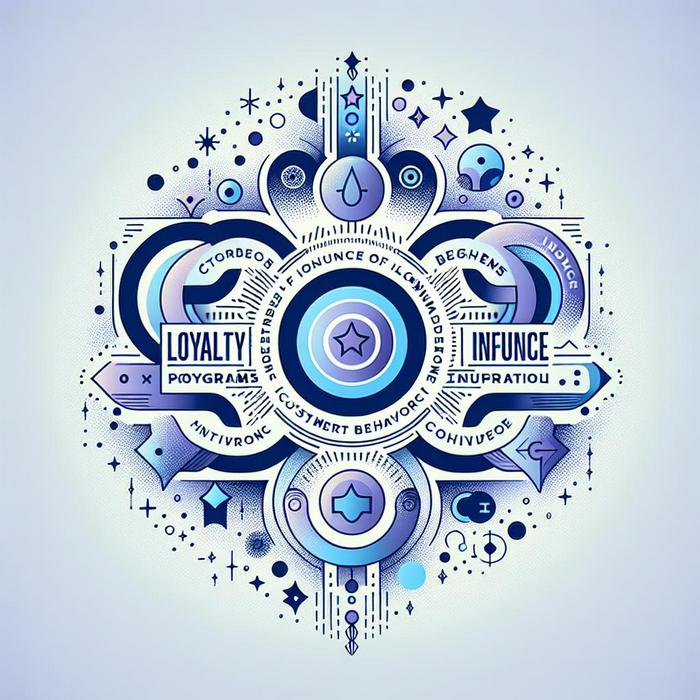Understanding the Impact of Loyalty Programs on Customer Behavior
Does the concept of value-based optimization resonate with your business strategy? If so, you’re likely aware of the significant influence that loyalty programs can have on your customers’ behavior. This transformation is essential for any company that aims to maximize customer lifetime value.
Unlocking the Power of Loyalty Programs
Loyalty programs, underpinned by a value-based approach, can be the key to fostering repeat business, increasing customer retention, and driving profitable customer behavior. However, extracting the maximum potential from your loyalty program requires a deep understanding of your customers and a strategy tailored to their needs and wants.
As proven by a Zinrelo study, high-value customers enrolled in loyalty programs spend 2.5 times more than other customers. Furthermore, they’re twice as likely to recommend the brand to others, emphasizing the dual benefit of increased revenue and powerful word-of-mouth advertising.
The Significance of Value-Based Optimization
How does value-based optimization come into play? Well, in essence, it is about assigning weightage to different customer actions and behaviors, making your loyalty program more impactful. It involves understanding what customers value most and rewarding them for their loyalty in a way that aligns with their preferences.
Here at Customer Lifecycle, we delve into the power of gaining competitive advantage with superior CLV. By understanding your customers’ behavior, you can optimize your loyalty program to maximize value, build strong relationships, and drive repeat business.
Delving Deep into Customer Retention Strategies
Remember, customer retention is not about enticing customers with attractive rewards alone. What truly matters is the overall customer experience that your brand delivers. Data-driven marketing strategies can help you understand your customers’ needs and preferences better, enabling you to fine-tune your approach.
The psychology behind loyalty programs, as highlighted by this insightful SaaSquatch article, confirms the effectiveness of personalized rewards in fostering loyalty. Thus, the link between customer retention and loyalty programs isn’t merely transactional – it ties in deeply with the emotions and psychology of your customers.
Customer Acquisition and the Influence of Loyalty Programs
Consider this – an efficiently designed loyalty program not only enhances customer retention but also plays a crucial role in customer acquisition. As customers experience the value your brand offers, they become brand ambassadors, influencing others to experience the same.
This is where our expertise on optimizing touchpoints for better CLV comes into play. By understanding and maximizing each interaction point, your brand can effectively engage potential customers, driving customer acquisition and impacting overall profitability.
In conclusion, a well-structured loyalty program significantly influences customer behavior, enriching the relationships between your brand and its customers. As part of a value-based optimization strategy, it can greatly contribute to the long-term success and growth of your business.
The Power of Loyalty Programs in Guiding Customer Decisions
Today’s competitive business is leading to a pivotal shift in how firms interact with their clientele. From personalized experiences to advantageous perks, successful organizations have recognized the transformative potential of loyalty programs. The influence these programs bear on customer behavior is significant, shaping their brand interactions and consequently their lifetime value to the business.
Understanding Customer Behavior Kernels
To fully harness the power of loyalty initiatives, it’s crucial to recognize three prevailing facets of customer behavior. These are: Conative, Affective, and Cognitive. Conative behavior refers to tendencies to engage with particular brands based on ingrained habits. Affective describes the emotional bonds customers create with companies, while Cognitive involves the thought processes and decisions made in favor of specific businesses (Source).
How Loyalty Programs Steer the Tide
Leveraging these dimensions, companies can craft loyalty programs that influence and reshape customer behavior, an illustration of value-based optimization in practice.
First and foremost, loyalty initiatives can promote habitual interaction. By incentivizing repeated patronage, such programs can mold conative behavior, strengthening customer bonds with the brand.
Such strengthened bonds are a result of the affective dimension, powered by emotive resonance. By creating bespoke experiences or providing premium customer service, businesses ensure customers develop a profound emotional connection, causing loyalty to burgeon further.
Finally, cognitive behavior can be influenced by reinforcing the benefits and value derived from sticking with a brand. High-volume businesses can, for example, adapt unique offers or provide exclusive product previews. The logic here is simple – the more value customers perceive, the likelier they are to stick around.
Thus, the ability of loyalty initiatives to tap into and influence these three dimensions reiterates their strategic importance in optimizing customer lifetime value (Source).
The Role of Data-Driven Decision Making
Leveraging data-driven decision-making processes can effectively strengthen loyalty program strategies. This approach empowers companies to comprehend individual customer needs, identify preferences, and use insights to create tailored experiences. By improving the accuracy of predictive analytics, businesses can create customer segments, enabling the personalization of loyalty initiatives. This strategy aids in boosting customer retention and maximizing customer lifetime value through value-based optimization (Source).
Experience and Automation in Value-Based Optimization
Enhancing customer experience plays a key role in the successful implementation of loyalty programs. A robust customer experience strategy combined with marketing automation can help leverage personalization and predictive analytics. Automation enables streamlined communication with customers, fostering deeper relationships, thus enhancing their loyalty.
Further, such value-based optimization strategies are scalable, customizable, and cost-effective, making them ideal for large businesses focused on retaining a broad customer base (Source).
Transforming Businesses with Value-Based Loyalty Programs
Where customer demands are ever-evolving, flexible and innovative loyalty programs can hugely influence customer behavior. By leveraging data-driven decision-making and marketing automation, large businesses can truly unlock the potential of value-based optimization—resulting in increased customer retention, healthy long-term growth, and a mutually beneficial scenario for both customer and company. These compelling insights provide meaningful impact and solid results, equipping executive leaders to champion the transformation of customer relations (Source).

